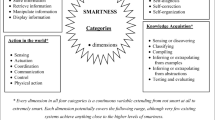Abstract
Technologies not only change “external reality” but also change our internal consciousness, shaping the way we experience the world. As the reality of intelligent environments is upon us—ushered along with the age of ubiquitous computing—we must be careful that the ideology these technologies embody is not blindly incorporated into the environment. As disciplines, engineering and computer science make implicit assumptions about the world that conflict with traditional modes of cultural production. For example, space is commonly understood to be the void left behind when no objects are present. Unfortunately, once we see space in this way, we are unable to understand the role it plays in our everyday experience. In order to make computationally enhanced spaces that are meaningful at the level of the everyday, we must exorcise the notion of intelligence from their design and replace it with life. Henri Lefebvre’s discussions of the space of everyday life provide a framework to help conceive this transition.

Similar content being viewed by others
References
Abowd G, Mynatt E (2000) Charting past, present, and future research in ubiquitous computing. ACM Trans Comput Hum Interact 7(1):29–58
Dourish P (2001) Where the action is the foundations of embodied interaction. MIT Press, Cambridge
Dreyfus H (1992) What computers still can’t do: a critique of artificial reason. MIT Press, Cambridge
Hall JS (2006) Utility fog: the stuff that dreams are made of. Lecture: Subtle Technologies, Toronto
Lefebvre H (1974) The production of space. Blackwell, Malden
McCullough M (2004) Digital ground: architecture, pervasive computing, and environmental knowing. MIT Press, Cambridge
Penny S (1997) The virtualisation of art practice: body knowledge and the engineering world view. CAA Art J 51(3):30–38
Sha XW (2005) Ethico-aesthetics in T* performative spaces. In: Kuzmanovic M, Boykett T (eds) On transient realities and their generators. Kibla, Slovenia, pp 22–39
Simons DJ, Chabris CF (1999) Gorillas in our midst: sustained inattentional blindness for dynamic events. Perception 28:1059–1074
Turing A (1948) Intelligent machinery. National Physical Laboratory report
Weiser M (1991) The computer for the 21st century. Sci Am 265(3):94–100
Author information
Authors and Affiliations
Corresponding author
Rights and permissions
About this article
Cite this article
Conrad, E. Soft architectures for everyday life. AI & Soc 26, 123–128 (2011). https://doi.org/10.1007/s00146-010-0291-5
Received:
Accepted:
Published:
Issue Date:
DOI: https://doi.org/10.1007/s00146-010-0291-5




